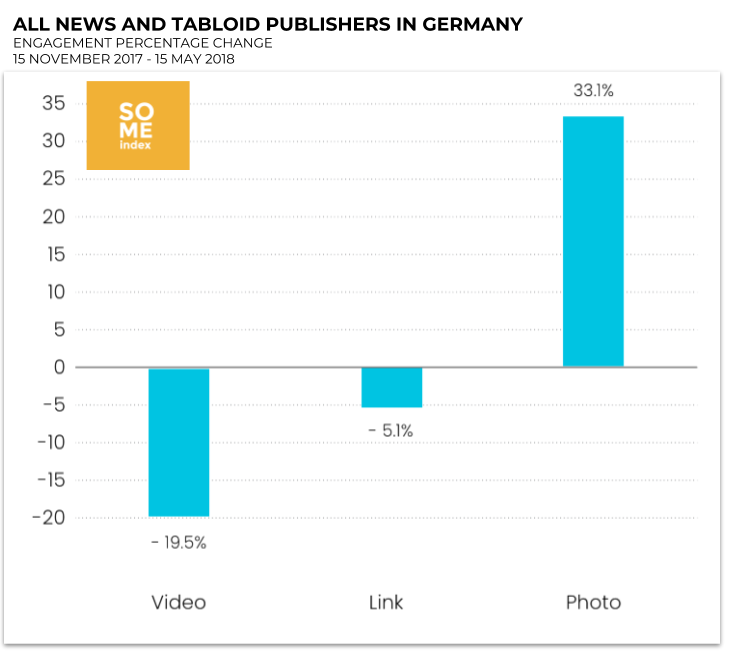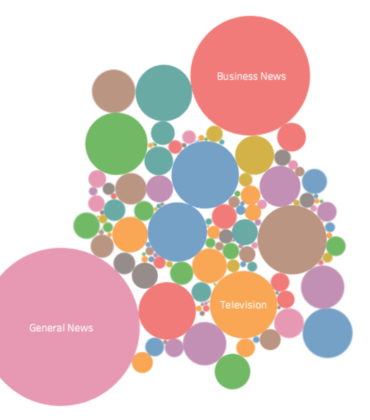Facebook is redefining its engagement logic
Six months since Facebook’s announcement of their News Feed algorithm change, what effects can we see on publisher engagement? We analysed engagement data between November 2017 and May 2018 for all major European countries and summarised three key points below.
1. Facebook On Post engagement dropped everywhere in Europe

Europe has seen a downwards trend of Facebook On Post engagement – reactions, shares and comments that happen on publishers’ own Facebook posts. Despite this general trend, there are some positive signs. In Germany, for example, traditional publishers like Tagesschau, Spiegel Online, and ZDF have actually grown their engagement in that time frame. You can find more detailed country-specific analysis for France, Spain, Germany, and the Netherlands here.
2.Video engagement is down
A significant portion of the drop is explained by the decline of engagement on videos. Across Europe, engagement on video posts has declined by about 30%, with Nordics seeing the highest decline of over 45%. Dig into the numbers for Spain, France, Germany, and the Netherlands.

3. Total Facebook engagement grows thanks to web shares
The data indicates that it’s time to focus on web shares: the engagement that’s brought in by your readers when they share an article from your website to their own social channels. In contrast to Facebook On Post engagement, web shares have grown for several major publishers in 2018. Below is an example from the Nordics.

Conclusions: Follow the data
Facebook is still a major traffic source and most likely will remain so.
- Review your content strategy.
- Web shares are growing and often fully compensate for Facebook On Post engagement drop. Which of your articles are shared the most?
- Video may not be prioritised by Facebook in the same way it used to be, but a lot is going on around video formats. Keep an eye on video news from Facebook like Watch and IGTV.
- Smaller publishers benefit from balancing of the largest pages towards the mid-sized ones. In most European countries, mid-sized and smaller news pages have been able to grow despite the news feed changes.
- For large publishers this is a good time to check how their verticals and local pages grow. Large publishers have seen engagement growth in vertical pages instead of main pages.
- Investigate and bookmark – do you perceive a general trend?
- Share your findings.
- Consider opening a dialogue with Facebook. They need you too.
When you have the data available regularly, you will spot immediately when something is out of the ordinary.
Check out other reports in EzyInsights research papers.


